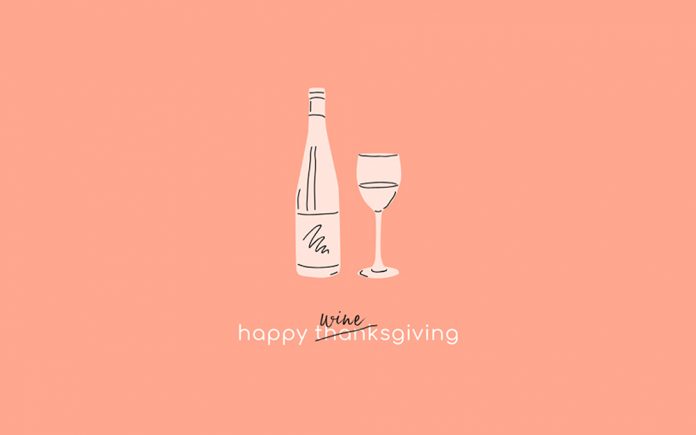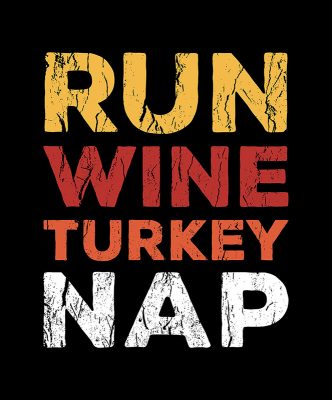
By Rick Riozza
Woke up…got out of bed…dragged a comb across my head. Oh My Goodness!! It’s Thanksgiving and I’m writing this at the last minute!
Hey there—relax, open a bottle of Prosecco and share a glass with whomever, or not, and just take the time to appreciate the gift of life! In fact, if a lot of people show up soon, why not offer a prayer of peace for everyone at that moment—so we cut the crap of minor angst & envy and enjoy simply considering that precious gift.
Whatever is cooking will be cooking. Thanksgiving is the best excuse to indulge in the company of your family & friends, and thank goodness! Pull out your best bottles if you wish, smile from ear to ear, and let’s catch up on some wine readiness:
For those bringing out their full-bodied California Cabs, Chateauneuf-de-Papes, Barolos & Brunellos, we’ve all learned that these wines reach their peak when served at ‘room temperature’. But what’s room temperature here in the desert!? And what’s room temperature in the brave new world of global warming!?
Old houses in France’s past regularly had room temperature at around 61 to 65 degrees. In our desert surrounds, our places run around 70 to 76 degrees easily. But please do not serve your stellar reds at 75 degrees Fahrenheit! A full-bodied red wine that is too warm can become almost soupy, with flavors hardly distinguishable and the power of the alcohol more noticeable.
For most red wines, spending around 20 to 30 minutes in the fridge will bring it down to an acceptable drinking temperature. If you’ve forgotten to chill your red(s) and it’s close to mealtime, consider the Ice bucket and metal containers like them which of course come in various shapes and sizes; just make sure they’re deep enough to adequately hold a bottle of wine and enough ice—preferably crushed ice—and a portion of water to cover the bottle, or at least most of it. In that surrounding, your wine should be cool enough to enjoy in about five minutes or so; for sparkling wines, it may take up to 20 minutes for the chill.
Often times, the meal’s wines are on the same platform near the stove during the cooking times and believe it or not, it heats up the wines a few degrees. Also, some of us keep our glasses of wine stored on shelves that are sometimes affected by the heat of the stove, and we forget to chill the glasses down. No one really likes their prized wine poured into a glass that’s warmer than the side of green beans on the table.
It’s often best to serve light- and medium-bodied reds slightly cooler than the recommended temperature for the heavy reds. The lightest reds – think Beaujolais, Frappato and even some Pinot Noir – do benefit with a nicer chill.
Hey—did we just mention Frappato. Let me take a break from the proceedings here and talk about Frappato. How many of you wine ventures have tried or even heard of this Sicilian red wine?
We know all you folks who shop at Trader Joe’s are already aware of the Sicilian Nero d”Avola, which sells at very reasonable prices. And it can be a full-bodied, full flavor wine. But when it comes to pairing with game cocks, Frappato is right in the mix. This wine is so lively and fresh. In a blind tasting, I’m certain many would guess this wine to be a delicious Beaujolais!
I recently enjoyed the 2020 Corvo Irmàna Frappato, and it hit all the spots on a wine that’ll go with the Thanksgiving or Holiday table! Light ruby red, this wine shows attractive aromatics, and rich flavors of red fruit & berries that’s cradled about with lovely fresh floral notes. Perfect at 12.5 alcohol, this can be enjoyed throughout the meal without taken you down for a nap. We’ll cover this wine next month, but we recommend grabbing this baby soon! It’s this season’s sexy choice.
Okay—if anyone really needs a tutorial on what temperature their particular red wine should be served at. A quick look on the internet will tell you:
Light, fruity reds: Aim for around 54 – 56 degrees Fahrenheit, but some can handle it even colder—you’ll know what you like, because chilled wine always gets warmer in the glass; Beaujolais & Valpolicella & Frappato.
Medium-bodied reds: 56 – 60 degrees Fahrenheit; Pinot Noir & Rioja.
Full-bodied reds: As stated earlier, serve between 61 – 65 degrees Fahrenheit, these are your Cabs, Syrahs, and heavy Red Blends.
We mentioned bubblies and sparkling wines that of course need the requisite chill to keep things clean and fresh. The French advise us to keep Champagne in the fridge for at least 48 hours before drinking it. And everyone loves French advice—I’m going to follow it, even if I have to multi-task. (Well—I may forget these things, in which case I’ll grab for that ice bucket with crushed ice and a little salt for good measure for 20–30 minutes.) The ideal serving temperature for Champagne is 47-50 degrees Fahrenheit.
 And last but not least—are we aerating the wine? Of course, any decent red wine can use a little air. Wine logic dictates to generally aim to decant around one hour before serving, although this varies depending on the bottle. Young, tannic red wines benefit the most, and older white wines should be decanted too.
And last but not least—are we aerating the wine? Of course, any decent red wine can use a little air. Wine logic dictates to generally aim to decant around one hour before serving, although this varies depending on the bottle. Young, tannic red wines benefit the most, and older white wines should be decanted too.
If we’ve forgotten to decant in time, find a clean glass container with a wide base. In such a situation, I’ve used a coffee pot to swirl the wine about—for half a minute. A quick note of concern: If one is going to open up an old vintage red that you’ve been saving for a special occasion—forget the decanting, it may be on its last legs, so pour it into a large glass and enjoy.
Happy Holidays! Cheers!










































